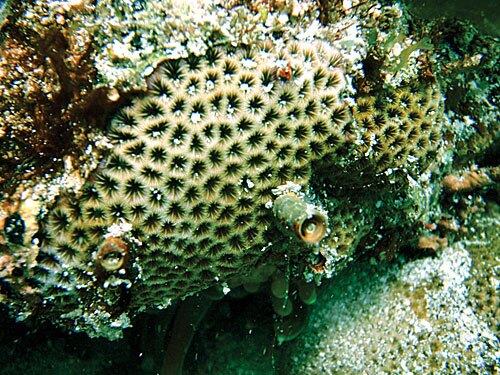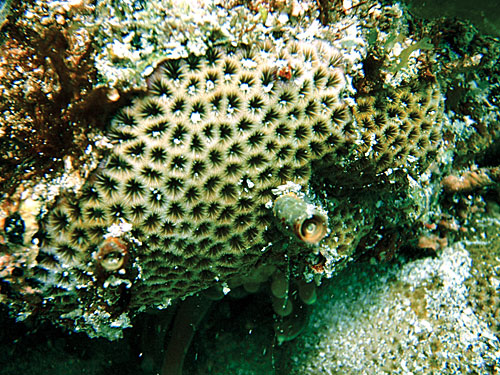Ocean acidification and coral reefs
DOI: 10.1063/PT.3.1430
Ocean acidification and coral reefs. In a shallow lagoon off the Yucatán coast, a US–Mexico team of marine scientists studied 10 natural springs of brackish water. The springs exhibit the low pH and resultant low carbonate saturation that scientists expect to see worldwide by the end of this century as increased carbon dioxide absorption from the air reacts with water and carbonate ions to form bicarbonate ions. That process reduces the amount of carbonate available to growing corals. Called ojos (eyes), the springs have existed for millennia in a mature ecosystem near the very large Mesoamerican Barrier Reef. Over two and a half years, the researchers sampled the waters and monitored coral populations at and near the ojos. The good news is that three varieties of hard coral, including the Siderastrea radians shown here, are able to calcify and survive even in the acidic, low-carbonate environment at the centers of the ojos. Only meters away, in the normal marine environment, six additional species thrive, including the large ones that form the major part of the reef framework. The bad news is that, if this system represents the future, then the reef’s framework may be compromised along with the biodiversity it supports. The result was announced by Adina Paytan (University of California, Santa Cruz) last December at the American Geophysical Union meeting in San Francisco. (E. D. Crook et al., Coral Reefs, in press, openly available at http://www.springerlink.com/content/w56q35571w7302n4/


